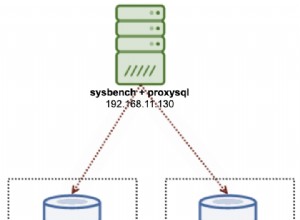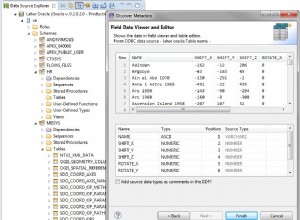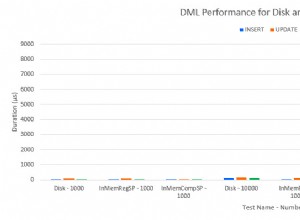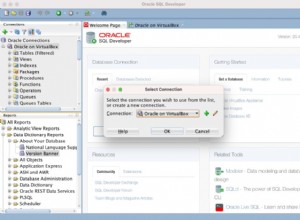Depois de fazer alguns comentários talvez sarcásticos, esse problema ficou no meu cérebro a noite toda, e eu finalmente cheguei à seguinte abordagem baseada em conjuntos. Eu acredito que definitivamente se qualifica como "elegante", mas também acho que se qualifica como "meio idiota". Você faz a ligação.
Primeiro, configure algumas tabelas:
-- For testing purposes
DROP TABLE Source
DROP TABLE Numbers
DROP TABLE Results
-- Add as many rows as need be processed--though note that you get N! (number of rows, factorial) results,
-- and that gets big fast. The Identity column must start at 1, or the algorithm will have to be adjusted.
-- Element could be more than char(1), though the algorithm would have to be adjusted again, and each element
-- must be the same length.
CREATE TABLE Source
(
SourceId int not null identity(1,1)
,Element char(1) not null
)
INSERT Source (Element) values ('A')
INSERT Source (Element) values ('B')
INSERT Source (Element) values ('C')
INSERT Source (Element) values ('D')
--INSERT Source (Element) values ('E')
--INSERT Source (Element) values ('F')
-- This is a standard Tally table (or "table of numbers")
-- It only needs to be as long as there are elements in table Source
CREATE TABLE Numbers (Number int not null)
INSERT Numbers (Number) values (1)
INSERT Numbers (Number) values (2)
INSERT Numbers (Number) values (3)
INSERT Numbers (Number) values (4)
INSERT Numbers (Number) values (5)
INSERT Numbers (Number) values (6)
INSERT Numbers (Number) values (7)
INSERT Numbers (Number) values (8)
INSERT Numbers (Number) values (9)
INSERT Numbers (Number) values (10)
-- Results are iteratively built here. This could be a temp table. An index on "Length" might make runs
-- faster for large sets. Combo must be at least as long as there are characters to be permuted.
CREATE TABLE Results
(
Combo varchar(10) not null
,Length int not null
)
Segue a rotina:
SET NOCOUNT on
DECLARE
@Loop int
,@MaxLoop int
-- How many elements there are to process
SELECT @MaxLoop = max(SourceId)
from Source
-- Initialize first value
TRUNCATE TABLE Results
INSERT Results (Combo, Length)
select Element, 1
from Source
where SourceId = 1
SET @Loop = 2
-- Iterate to add each element after the first
WHILE @Loop <= @MaxLoop
BEGIN
-- See comments below. Note that the "distinct" remove duplicates, if a given value
-- is to be included more than once
INSERT Results (Combo, Length)
select distinct
left(re.Combo, @Loop - nm.Number)
+ so.Element
+ right(re.Combo, nm.Number - 1)
,@Loop
from Results re
inner join Numbers nm
on nm.Number <= @Loop
inner join Source so
on so.SourceId = @Loop
where re.Length = @Loop - 1
-- For performance, add this in if sets will be large
--DELETE Results
-- where Length <> @Loop
SET @Loop = @Loop + 1
END
-- Show results
SELECT *
from Results
where Length = @MaxLoop
order by Combo
A ideia geral é:ao adicionar um novo elemento (digamos "B") a qualquer string (digamos, "A"), para capturar todas as permutações você adicionaria B a todas as posições possíveis (Ba, aB), resultando em um novo conjunto de cordas. Em seguida, itere:adicione um novo elemento (C) a cada posição em uma string (AB se torna Cab, aCb, abC), para todas as strings (Cba, bCa, baC), e você tem o conjunto de permutações. Itere sobre cada conjunto de resultados com o próximo caractere até ficar sem caracteres... ou recursos. 10 elementos são 3,6 milhões de permutações, aproximadamente 48 MB com o algoritmo acima, e 14 elementos (únicos) atingiriam 87 bilhões de permutações e 1,163 terabytes.
Tenho certeza de que poderia eventualmente ser encaixado em um CTE, mas no final tudo o que seria um loop glorificado. A lógica é mais clara assim, e não posso deixar de pensar que o plano de execução do CTE seria um pesadelo.




